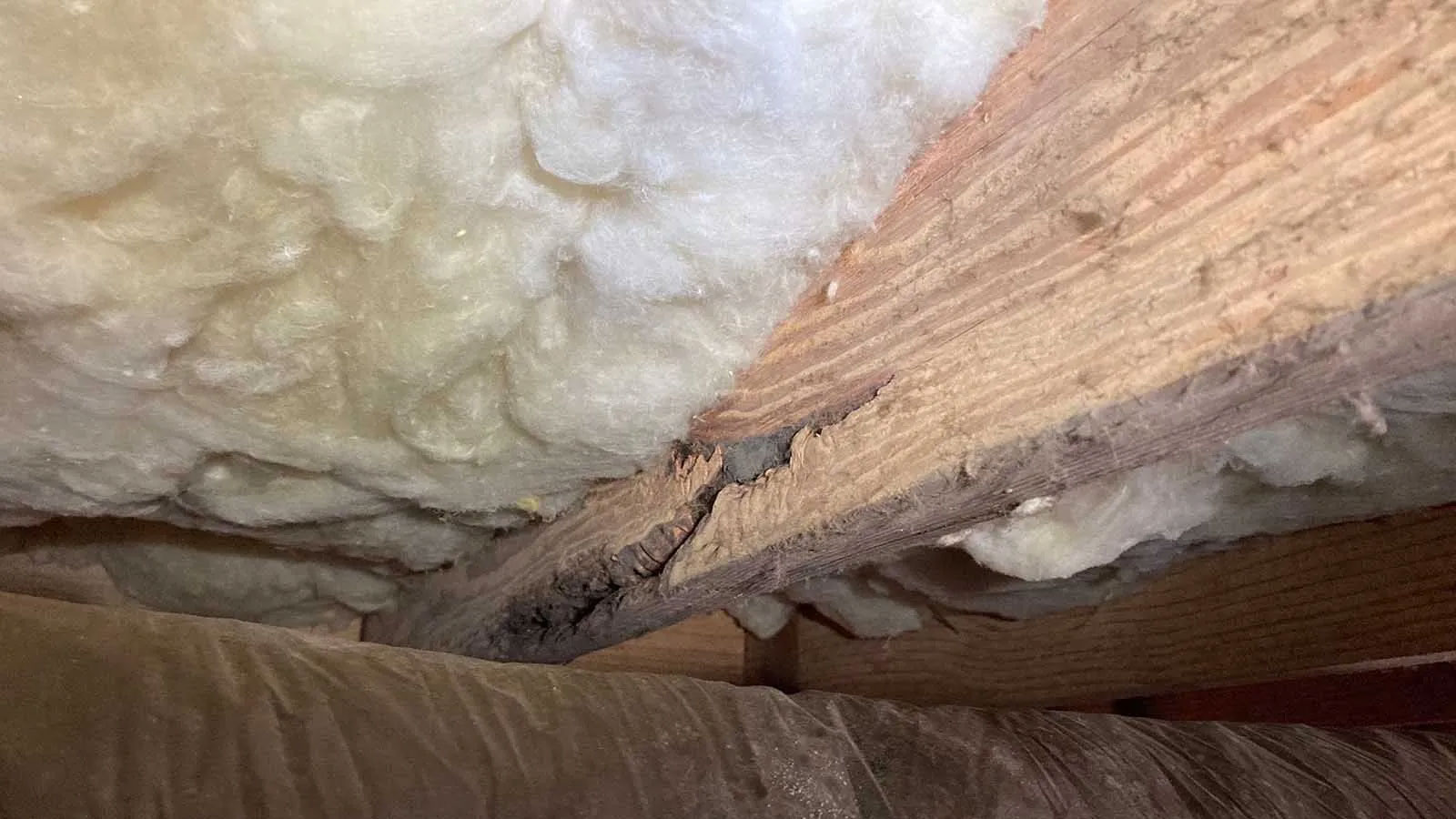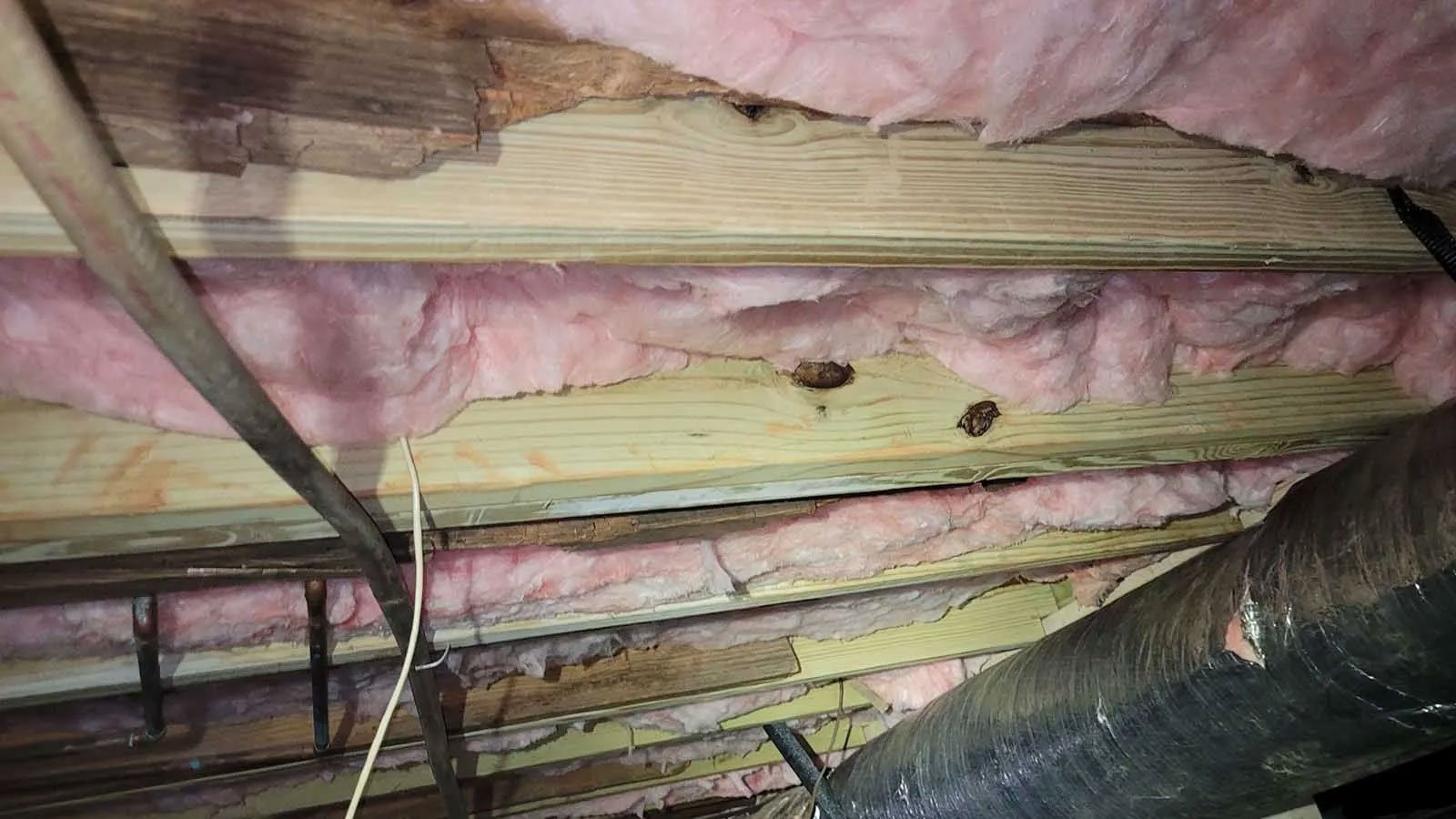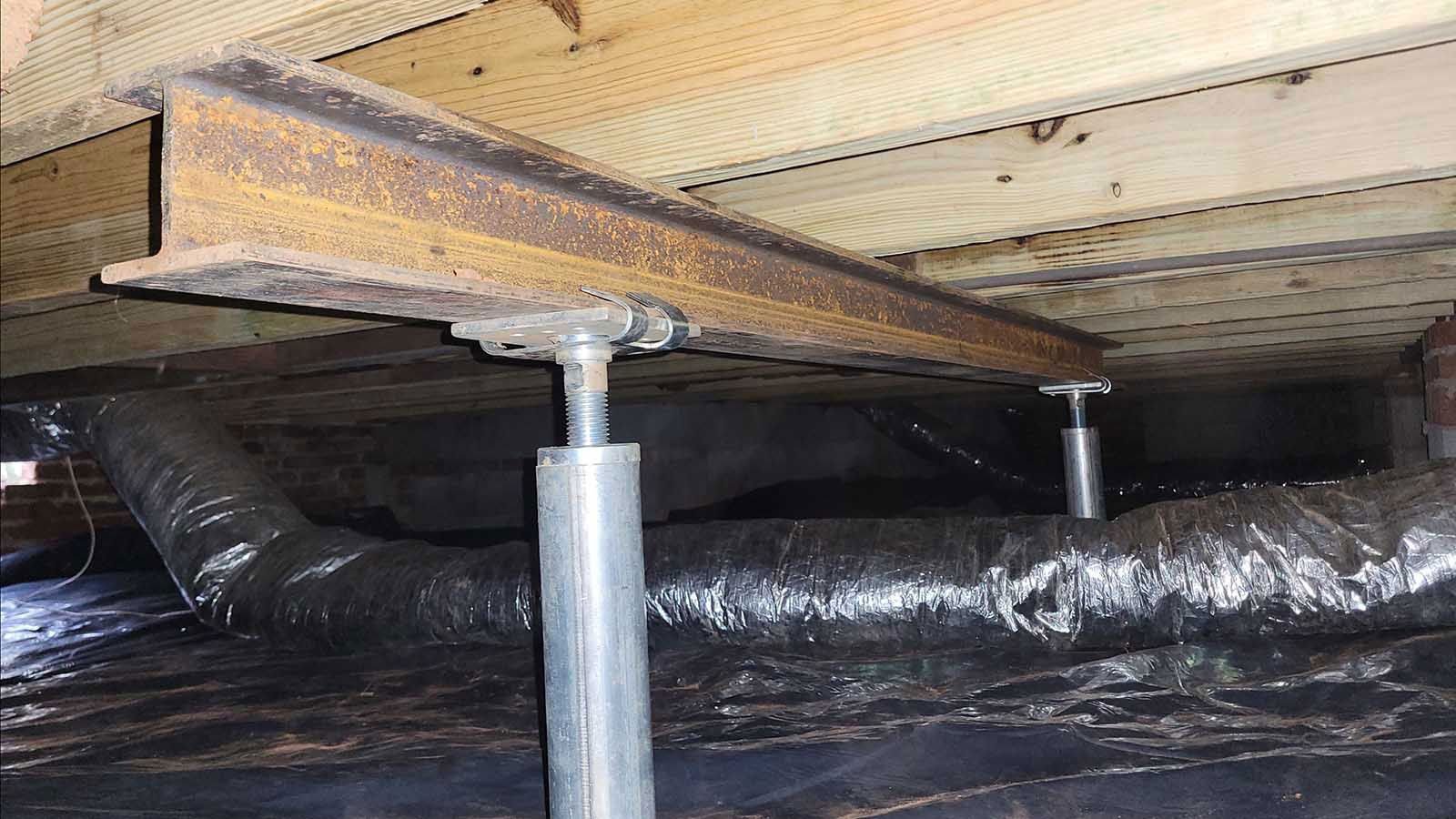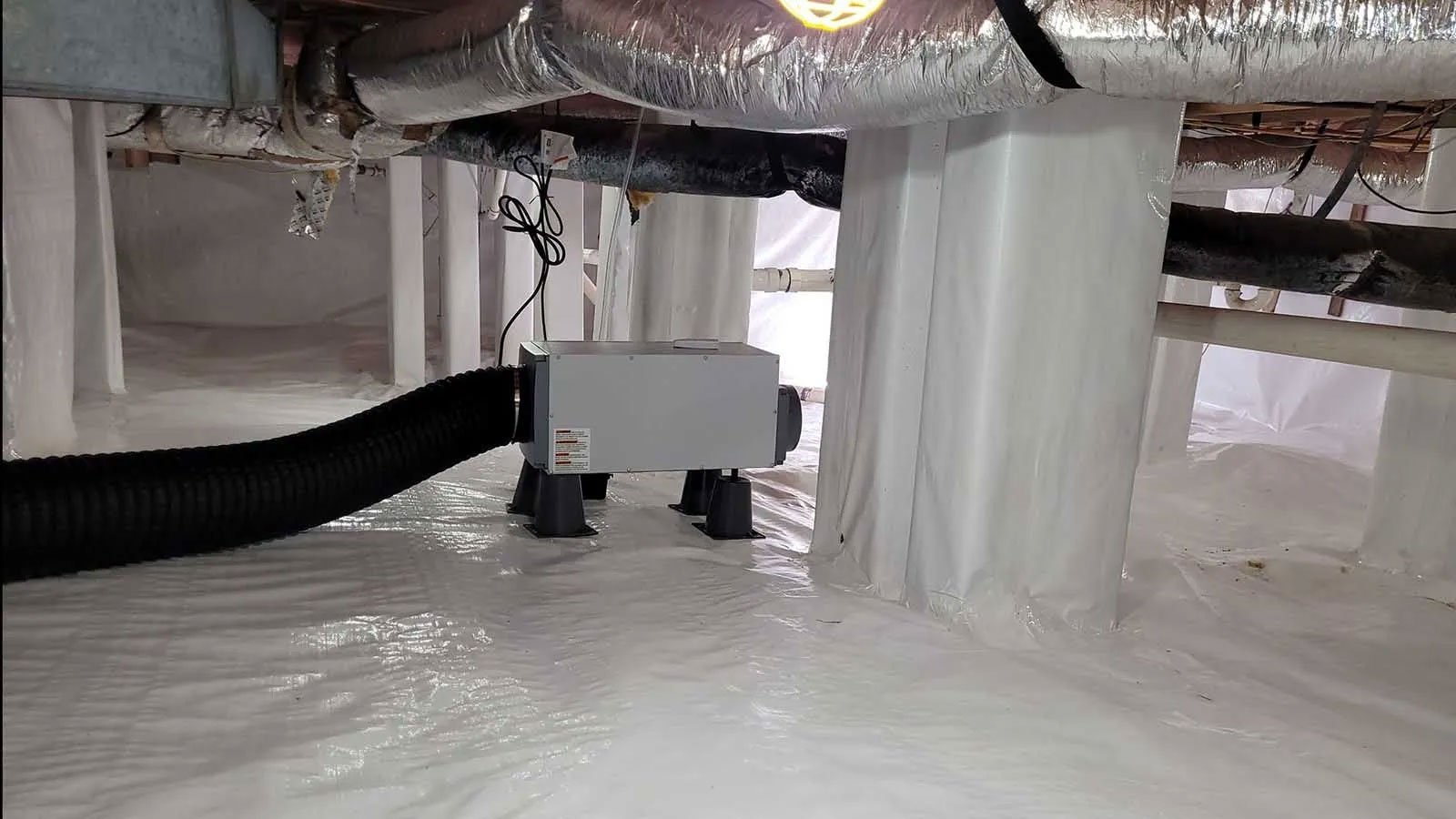If the signs of foundation problems in your home are attributed to rotting wood or an improperly constructed flooring system, don’t worry. There are several options available to repair and reinforce your home’s subfloor and framing. Sloping or uneven floors, or a floor that feels soft or springy when walked on, are most likely caused by a damaged or improperly installed support system.
The subfloor in your home is carefully designed to support the weight of your home’s floor, walls, furnishings and appliances. Damage to any part of the system can have big repercussions for your home’s interior as well as the structural integrity of your home. Damage can include rotten wood due to moisture or insects, cracked or broken floor joists, or sagging joists due to improper or outdated building techniques.
A thorough inspection of your home’s crawl space can reveal whether you have damage, and to what extent. Repairs to damaged wood or poorly constructed floor joists can range from relatively simple to complex and costly. No matter the extent of the damage, it is critical to repair it as soon as possible. Left unaddressed, the damage and rot problems will only continue to worsen and could cause additional damage to the structure of your home.
Damaged or Rotten Wood
There are many different types of damage that can occur to a wood subfloor system. Water damage, either from plumbing leaks or water intrusion into a basement or crawlspace, is one of the most common, and it can cause wood to swell and warp. In some cases, mold and rot can set in, which weakens the structure of the wood and can lead to cracks or failure. Termite damage is another common culprit.
Depending on the type of damage, wood repairs can include replacing the wood altogether, or strengthening the existing structure by adding wood to the damaged places.
While it would seem logical that you would want to completely remove a damaged wood floor joist or beam and replace it with a new one, that most likely isn’t the best option. Floor joists work together as a system to support the weight of a home. Removing even a small number of them for joist replacement can cause your sub floor to sag or shift during the process, increasing the chance of damage to your home’s floor, walls, or interior structures.
The preferred repair method for damaged joists or wood beams is sistering joists, which involves reinforcing the damaged wood with a new piece of the same size and dimension. One new piece can be used, but it is also common to use two pieces, one on either side of the damaged wood. This method creates a double joist that provides additional support and helps distribute the weight of the structure more evenly.
Insufficient Structural Support
Floor joists that are spaced too far apart may not offer enough support for your home. While building codes dictate the minimum spans for wood beams, these measurements may not be sufficient to keep your floors from squeaking or sagging. If your home was built prior to modern building codes, the joists could probably benefit from some extra support.
To provide extra crawl space support, sister joists are a commonly used method for repairing damaged floor joists. Depending on the extent of sagging, extra joists may be required in between the existing joists. Floor jacks and I-beams may be needed to fix a sagging or broken beam, which is a major structural element to the floor system. Hydraulic jacks are used to slowly raise the floor back to level and a metal beam is installed perpendicular to the floor joists, providing a solid and stable foundation.
Preventing Wood Damage in A Crawl space
One of the most common causes of crawl space wood damage is moisture and water damage. Crawl spaces are by nature damp and humid. Most people would consider their crawl space dry if they don’t see standing water, but in fact the humidity level in an un-encapsulated crawl space is often quite high. This high humidity level provides perfect growing conditions for mold. Wood that is continually subjected to moisture and mold will eventually rot.
A fully encapsulated crawl space with a dehumidifier installed will maintain healthy humidity levels, somewhere between 40% and 60%, with an optimum level between 50-55% humidity. This healthy environment will not only prevent mold formation in your crawlspace, it will also make your home more energy efficient and will improve the air quality inside your home.
Schedule a Free Crawl Space Inspection
If you suspect you have wood damage in your flooring support system, or that your floor joists may need additional support, don’t hesitate to get your crawlspace inspected. Catching damage early can prevent further damage to your home and may save you money in the long run.
Contact HydroHelp911 to have your home’s crawl space professionally assessed. Our experts will inspect your crawl space, walk you through their findings and determine the best course of action for any floor joist repairs. Give us a call at 704-741-9737 to schedule an appointment.








